Hello sweet friends! Welcome to a special historic edition of Fashion Friday. The year 2020 marks the 100th anniversary of the 19th Amendment which gave American women the right to vote. If you would like to quickly skip past the amazing history you can find the Make Your Own Suffragist Suffragette Sash tutorial at the end of the post.
What Is Suffrage?
Suffrage simply means the right to vote in elections.
The term Suffragist was given to individuals who believed in peaceful, constitutional campaign methods. In the early 20th century, after the suffragists had not made significant progress for the women’s right to vote a new generation of activists emerged. Those willing to take action for the cause were given the title of Suffragette. While the titles were originally meant to belittle the members they fully embraced them.
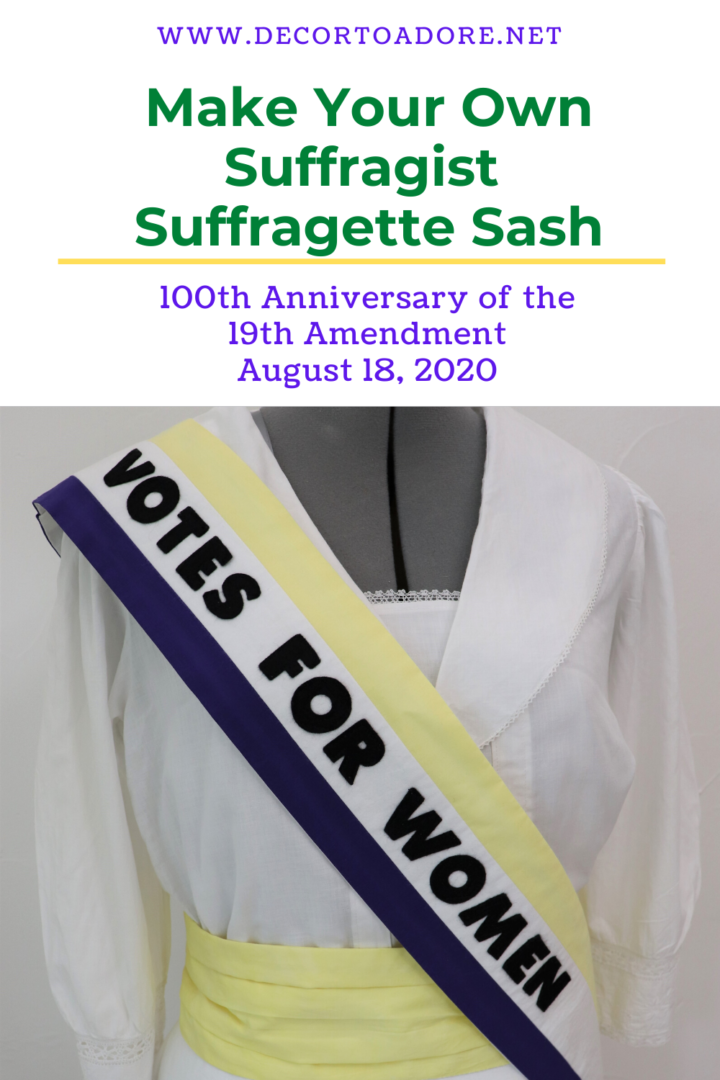
Early Years
The early beginnings of the movement in America began around 1840. The first Women’s Rights Convention was held in Seneca Falls, New York, and spanned two days over July 19–20, 1848. The first National Women’s Rights Convention was held in 1850 in Worcester, Massachusetts.
A few notable women of the early cause included:
Lucretia Mott
Harriet Tubman
Elizabeth Cady Stanton and Susan B. Anthony

Lucy Stone
Sojourner Truth

Progressive Era
Carrie Chapman Catt
Ida B. Wells
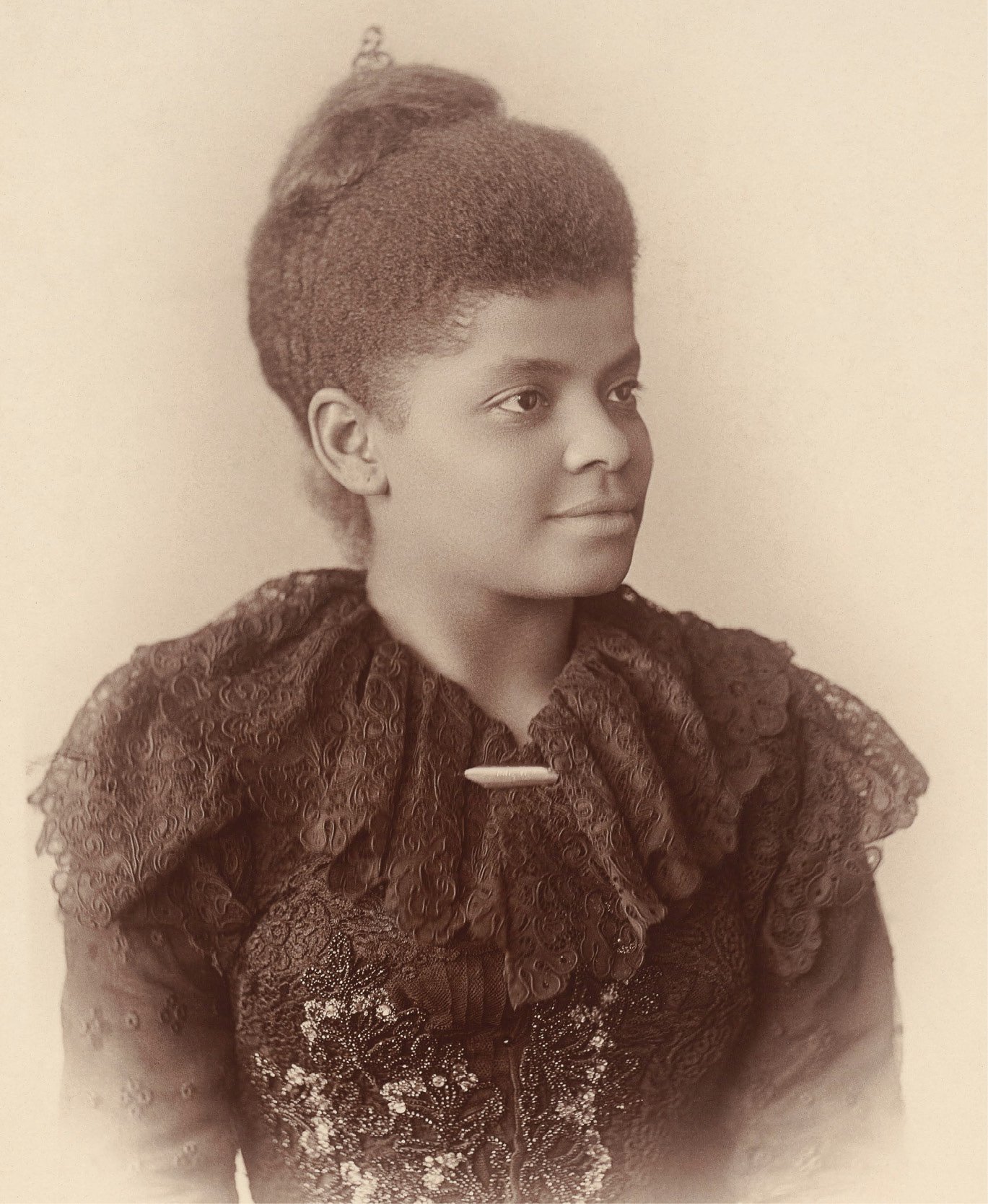
In the United Kingdom (U.K.), the Women’s Social and Political Union (WSPU) was a major organization that campaigned for women’s suffrage. Emmeline Pankhurst was one of the major activists.

Emmeline’s daughter, Sylvia Pankhurst, designed many elements of the visual identity of the WSPU. She presented the group with a fashionable and feminine image.
Her sister, Christabel Pankhurst, embodied the movement in a monumental portrait painted by Ethel Wright.
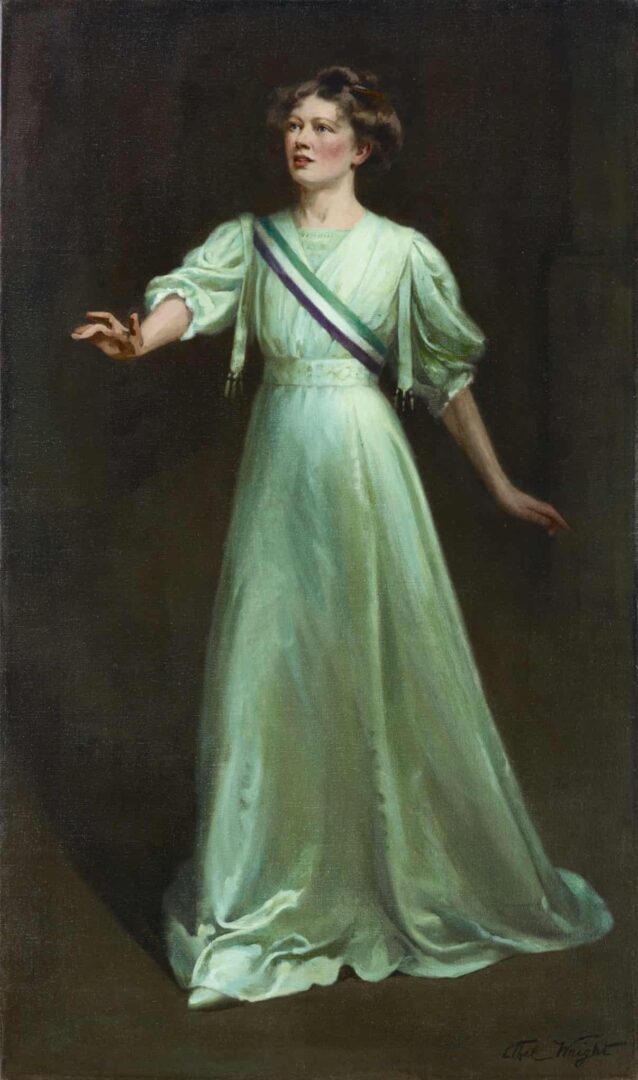
Color Scheme
The U.K. suffragettes’ color scheme was devised by Emmeline Pethick-Lawrence in 1908. Purple was selected for loyalty and dignity, white for purity, and green for hope.
Many merchants and designers created tricolor-striped ribbon, garments, jewelry, and more.

In 1916 Alice Paul founded the National Woman’s Party (NWP) in America. The NWP was focused on the passage of a national suffrage amendment.

American suffrage colors were purple, white, and yellow (often listed as gold). They also stood for loyalty, purity, and hope.
The use of yellow/gold goes back to 1867 when Kansas was considering the passage of a state suffrage referendum. Elizabeth Cady Stanton and Susan B. Anthony adopted the Kansas state flower, the sunflower, as a symbol of the suffrage cause. Soon, gold pins, ribbons, and sashes, as well as yellow roses became symbols of the cause.
Suffragists were often depicted in the media as unattractive and masculine.

To help counter this image suffragists wore smart suits and dresses while marching in parades.

The dresses were often all white as this symbolized the femininity and purity of the suffrage cause. White dresses also offered better visibility. In addition, white dresses were also easier and cheaper to attain than colored ones. A poor or middle-class woman could show her support for suffrage by wearing a white dress and adding purple, yellow, or green accessories.
Ultimately the Suffragist/Suffragette would include many respectable and notable women. Even in children’s films, she was portrayed as a fun-loving spirit.
Mrs. Banks, in Mary Poppins, was my first brush with a Suffragist. How about you?

Sassy Sashes
Sashes were the most popular item that became symbolic of the cause.

They came in various lengths and widths.

Some were even pennant shaped.
Make Your Own Suffragist Suffragette Sash
In this tutorial, we will cover two separate sashes. The open-ended sash is perfect for the beginning seamstress. It was sewn in the United Kingdom colors.
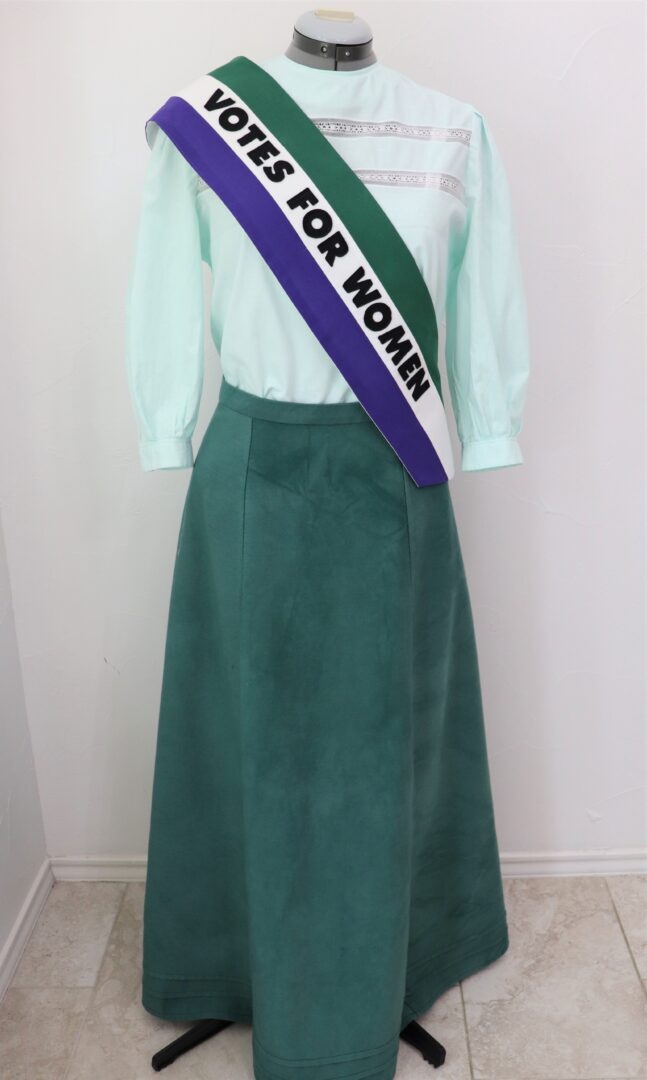
For those who would like information on the green Edwardian insertion lace shirtwaist (blouse) please visit THIS POST.
The second tutorial will cover the closed-ended sash which requires intermediate sewing skills. This sash was created in the American colors.
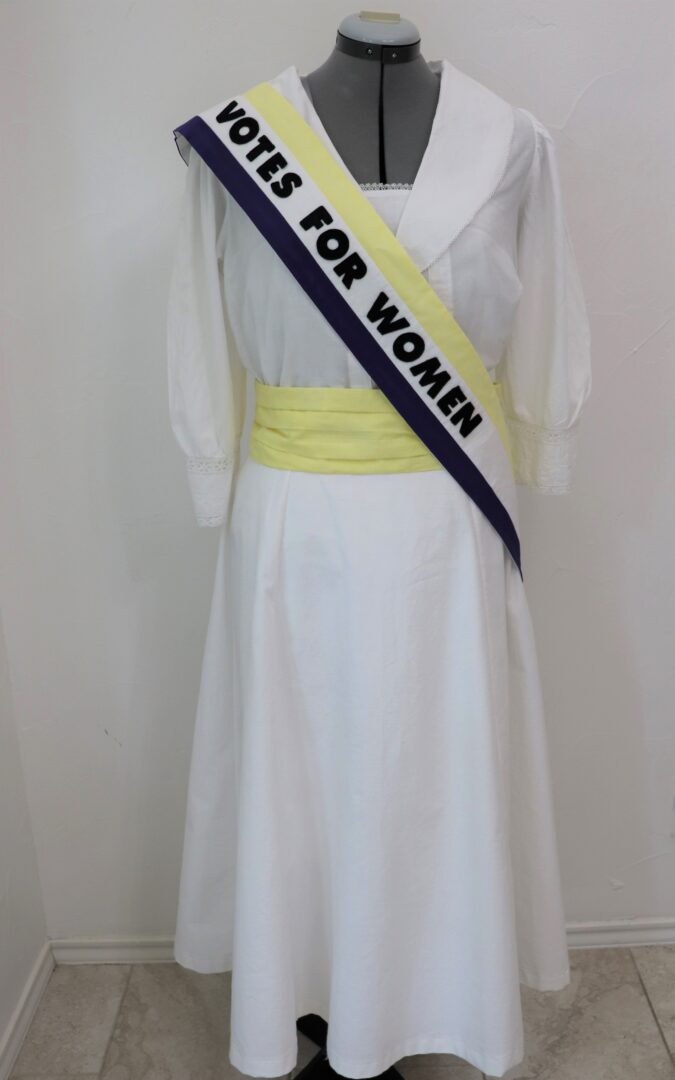
You can find construction details on the white Armistice style blouse HERE.
The Supply List
- Sewing machine (Or hand stitch if you prefer.)
- Iron
- 1/4 yard each of white, purple, green, and gold cotton fabric (All cotton broadcloth was used.)
- 2 yards of white cotton muslin (For the backing.)
- White and black thread (Cotton thread was used for historical accuracy.)
- Black letters (Wool felt letters were used for historical accuracy but you can also use stencils and fabric paint. Iron-on letters could also work!)
- Scissors
- Pins
- Optional but recommended: midweight or lightweight apparel interfacing for the white strip of fabric. It creates a strong foundation in which to stitch the letters.
Let’s Begin
Wash, dry, and iron your fabric.
Most fabrics are about 40” to 45” wide between the finished edges. I chose to rip the fabric strips from one selvage end to the other. This ensures your fabric is on the grain of the fabric and won’t shift or twist. But you can also cut out your fabric strips.
For the U.K. sash, the fabric strips measured 3 1/2″ (8.89 cm) by 45 ” (114.3 cm).
You will need two white strips of fabric, two purple strips of fabric, and two green strips of fabric to create a front and back.
Sew one, green, white, and purple strip together. I used a 5/8th seam allowance but you can use whatever you prefer.
Press open your seams. Add interfacing to the backside if desired.
Repeat the above for the back portion of the sash. You will not need interfacing.
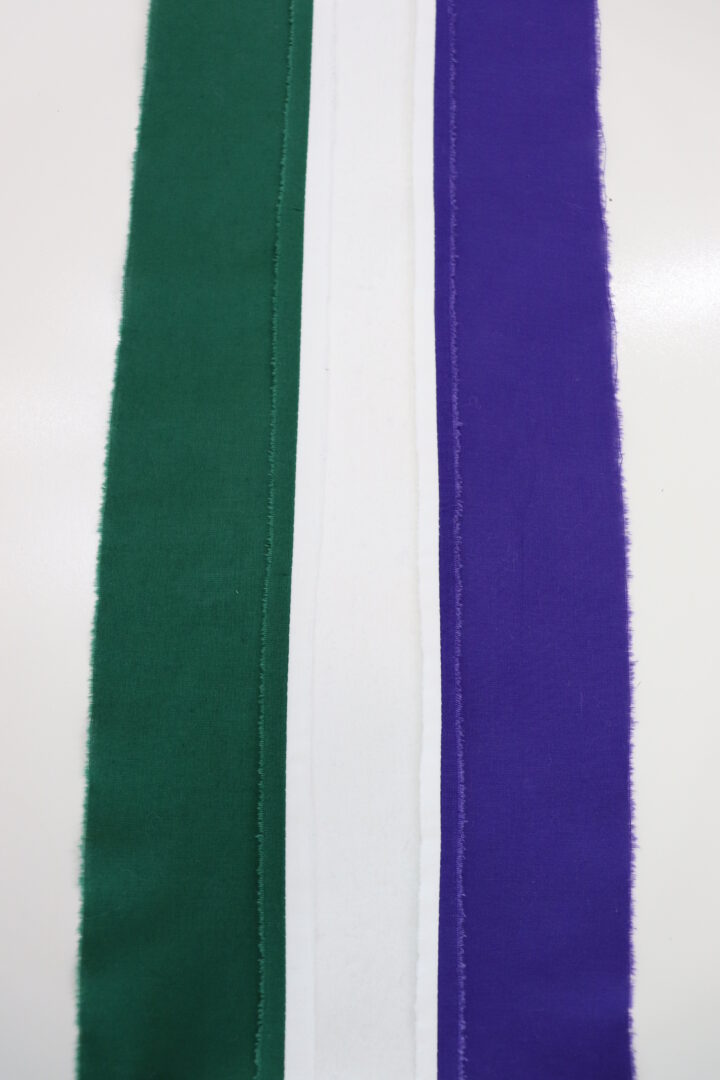
Section 2
Join the two sections of fabric strips together end to end. The seam will sit on top of your shoulder. Determine the placement of where you would like your letters to start. Mark with a pin.
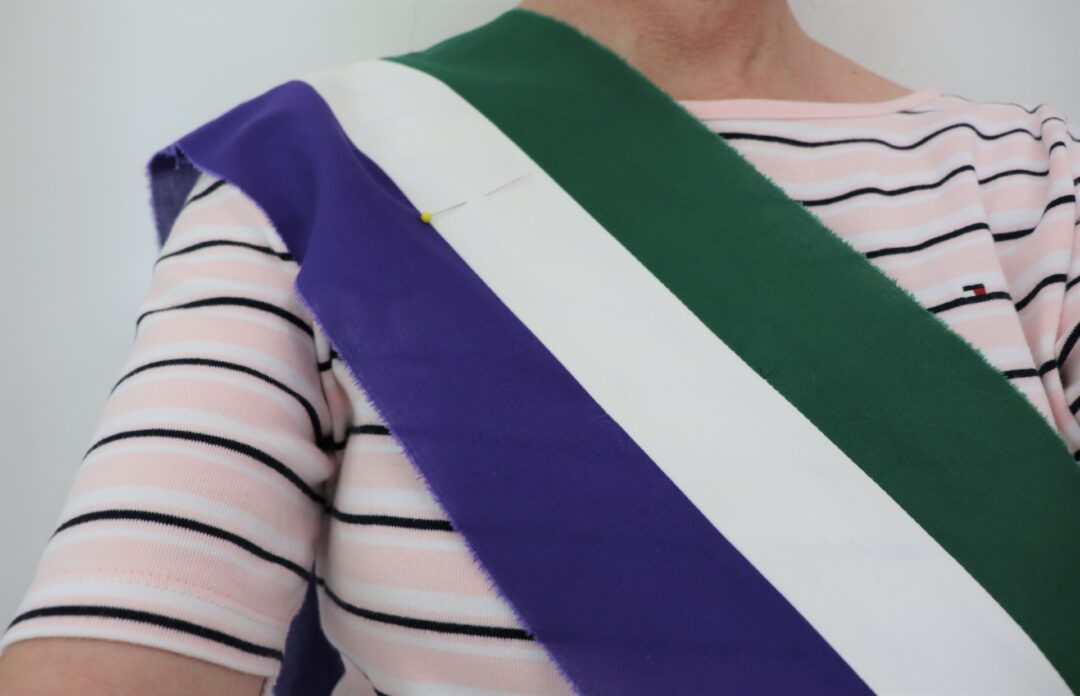
Section 3
Sew on the letters.
Try on the sash again to see where you want the bottom of the strips to end. Cut off any extra length. Angle the end.

Section 4
Tear/cut a solid piece of white muslin fabric for the backing. Use the sewn strips as your pattern template.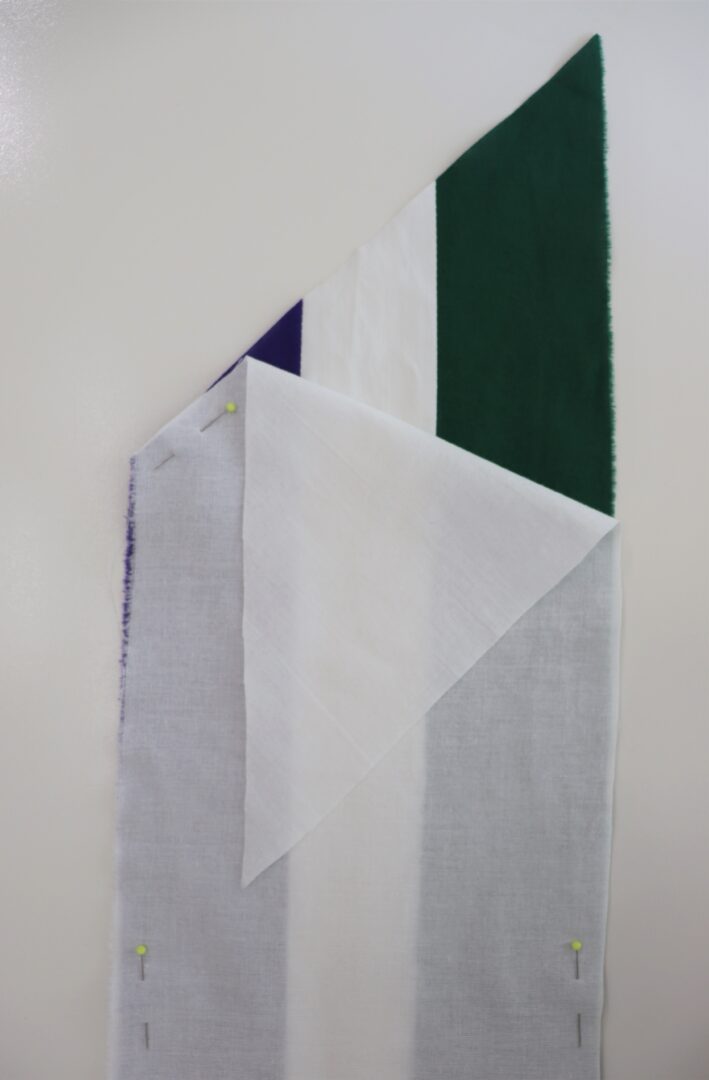
Section 5
Sew the sash backing to the front. You will want to leave a small unsewn gap so that the sash can be turned inside out.
TIP: Mark where you want to start and stop sewing. I prefer using green (go) and red (stop) pins.
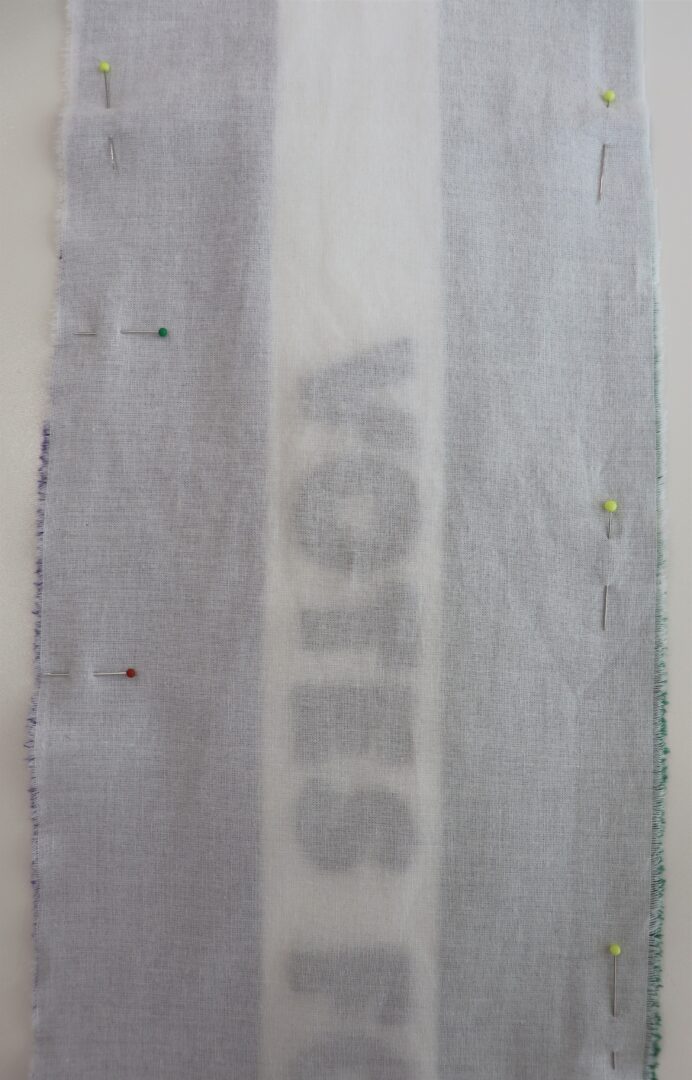
Section 6
Snip your corners carefully.
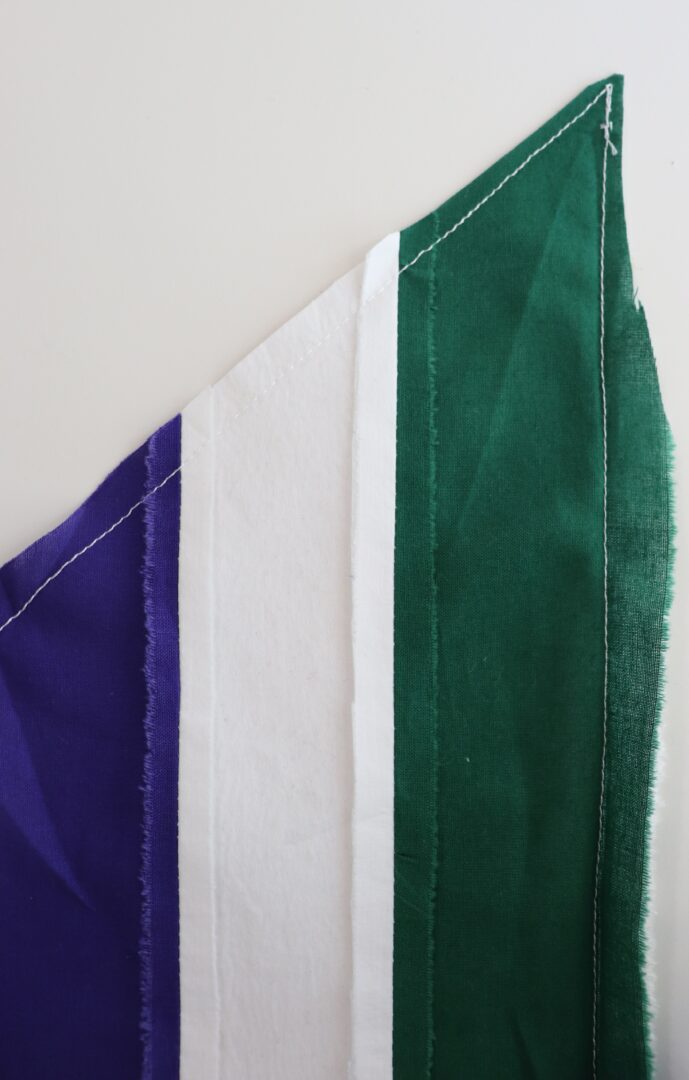
Turn the sash inside out and give the sash a good pressing. Slip stitch the opening closed.
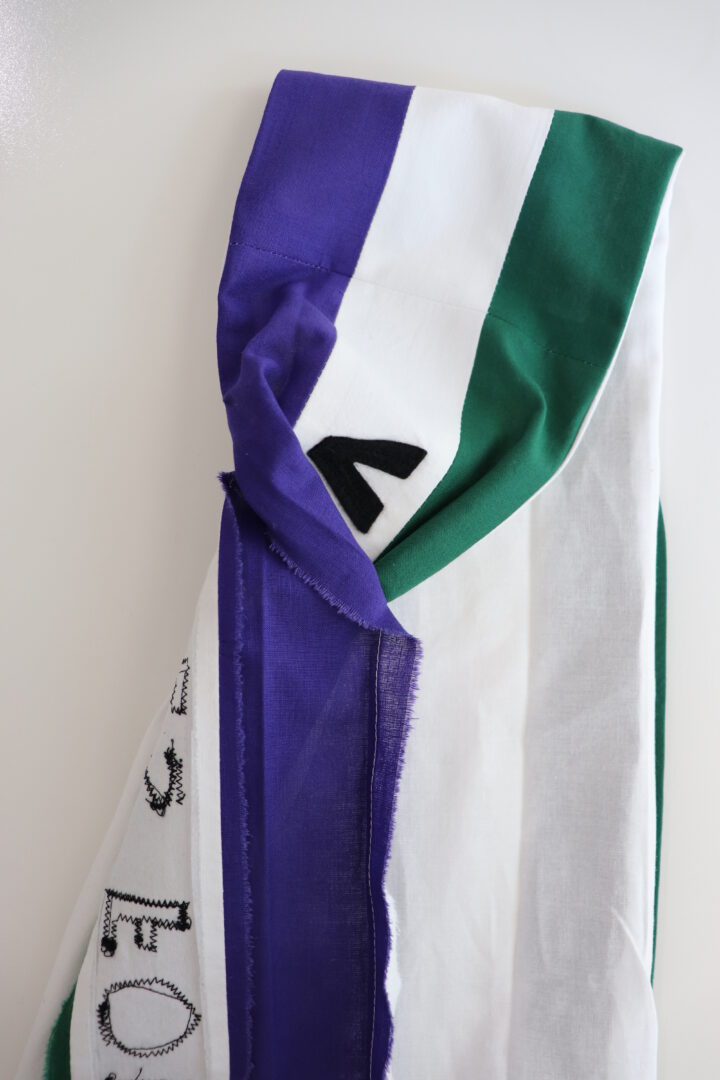
Suffragettes secured their sash ends with rosettes, pins, and brooches.
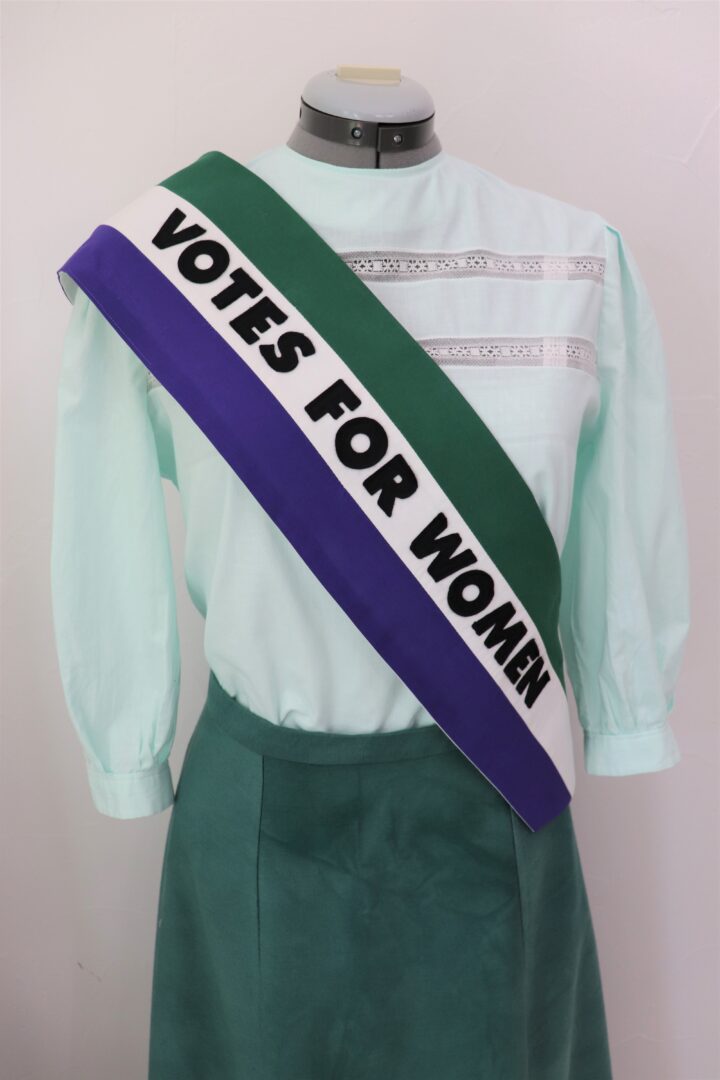
I cut my sash fairly short to sit near my hip. You can leave it longer if you wish.

Because I have fairly narrow shoulders I decided to make my American sash thinner. You can go as wide as you wish. The original sashes, some of which were shown earlier in the post, were a variety of sizes.
The American Sash
This sash is a bit more narrow and has an angled seam at the hip.

For the American sash, the fabric strips measured 2″ (8.89 cm) by 45 ” (114.3 cm).
You will repeat sections 1-4 from above.
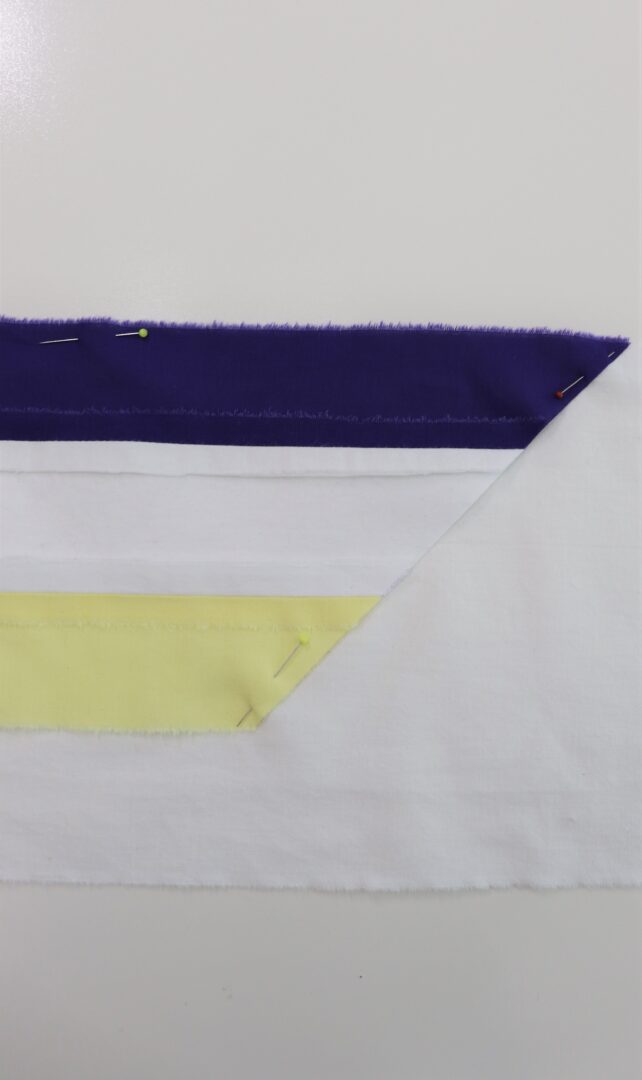
Section 5
Sew your angled strips together. Press open the seam.
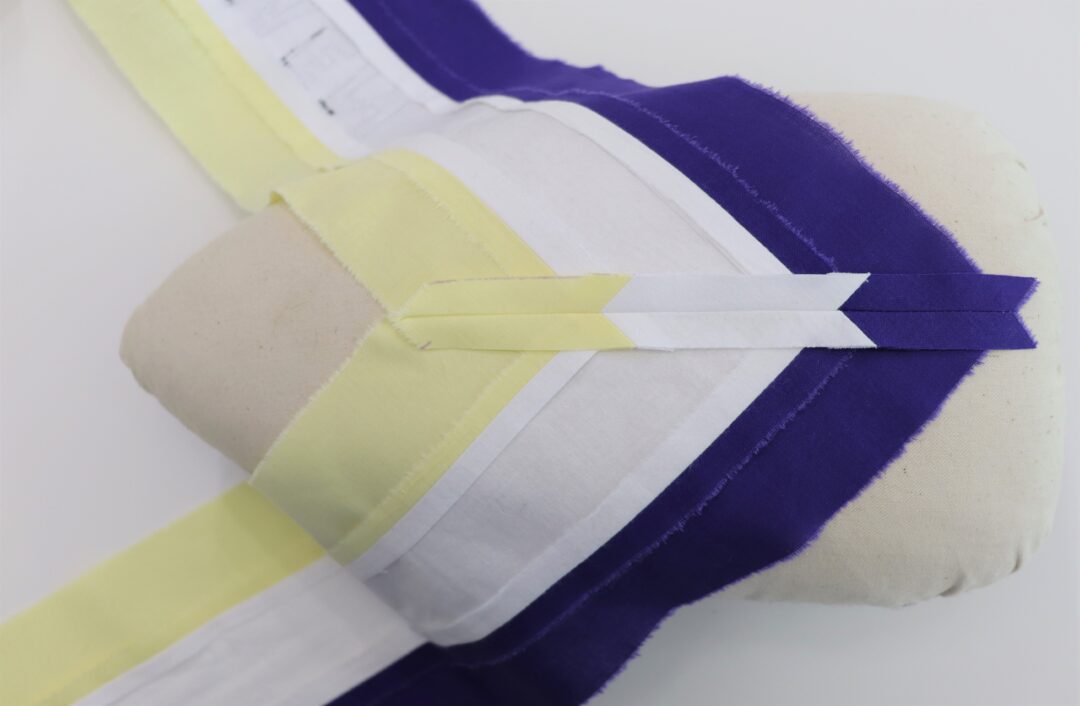
It does require a bit of patience to get your seams to match up perfectly.
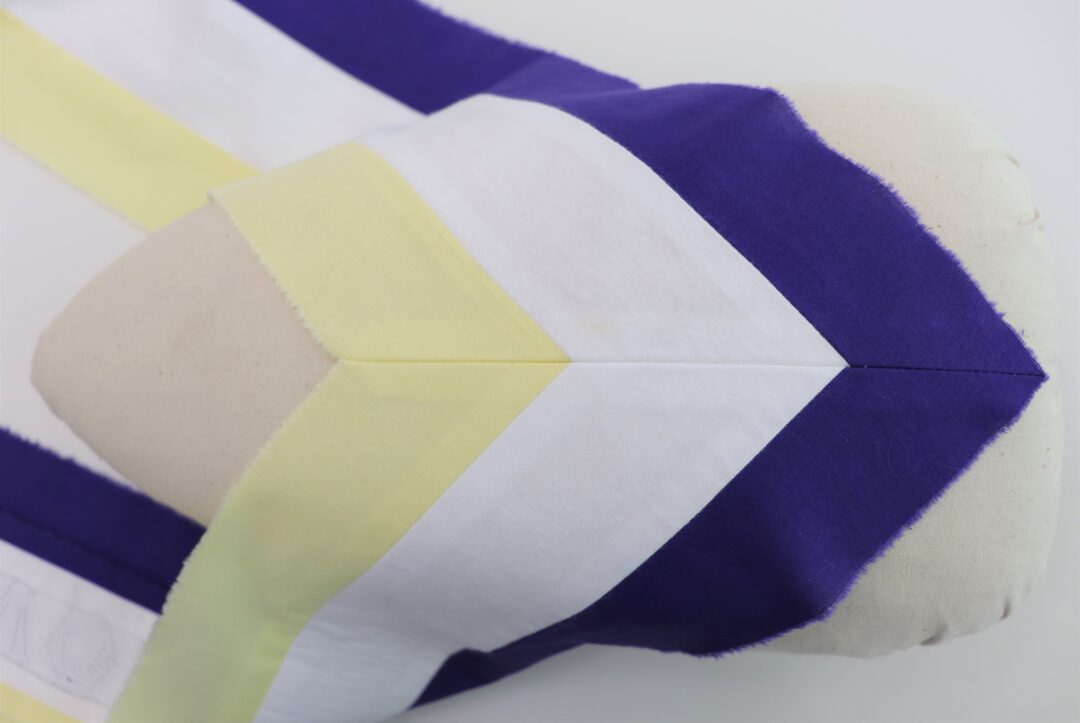
Section 6
Pin and sew the white muslin backing to the strips. DO NOT sew the shoulder seams closed. You will need both ends open to turn the sash inside out. The angled hip area is a bit tricky to maneuver the fabric through but you will persevere! Once the sash is turned out give it a good pressing.
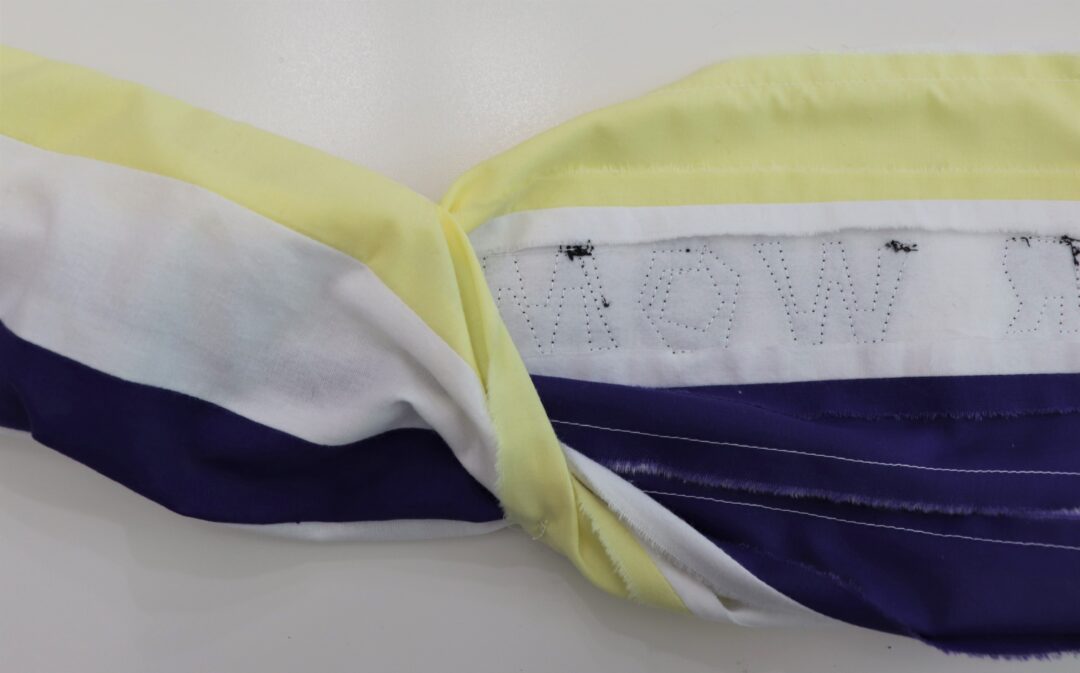
On the open ends press in the fabric at least 1/4″. Slip one end of the sash into the other and slipstitch close.
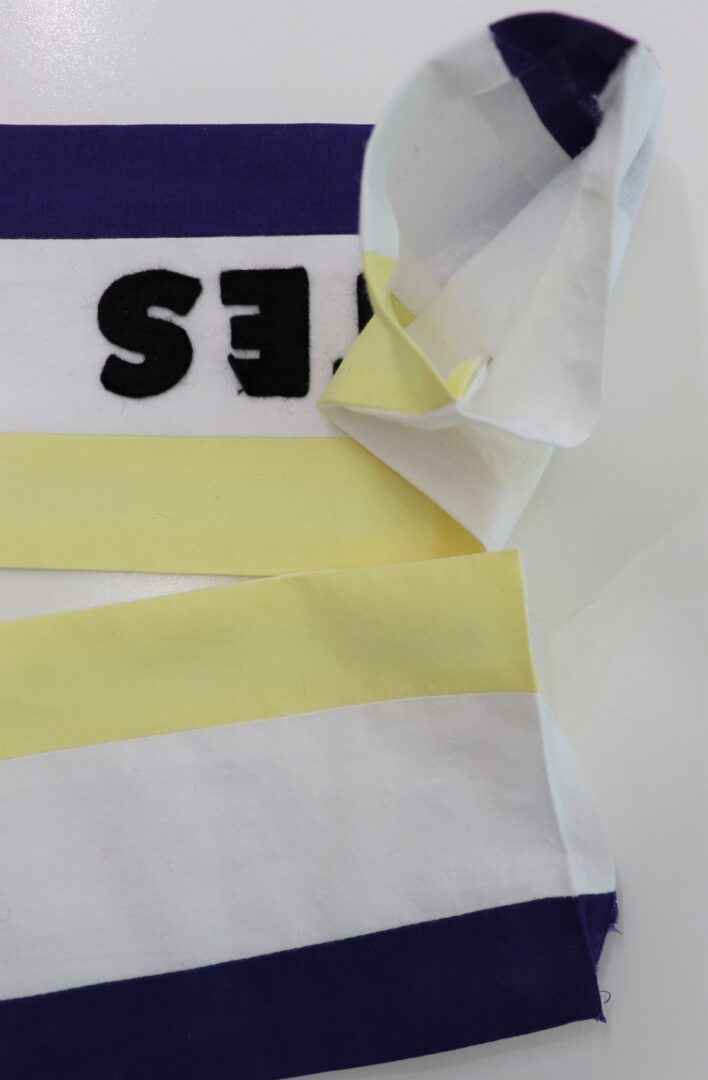
Of the two this is my favorite sash fit wise.
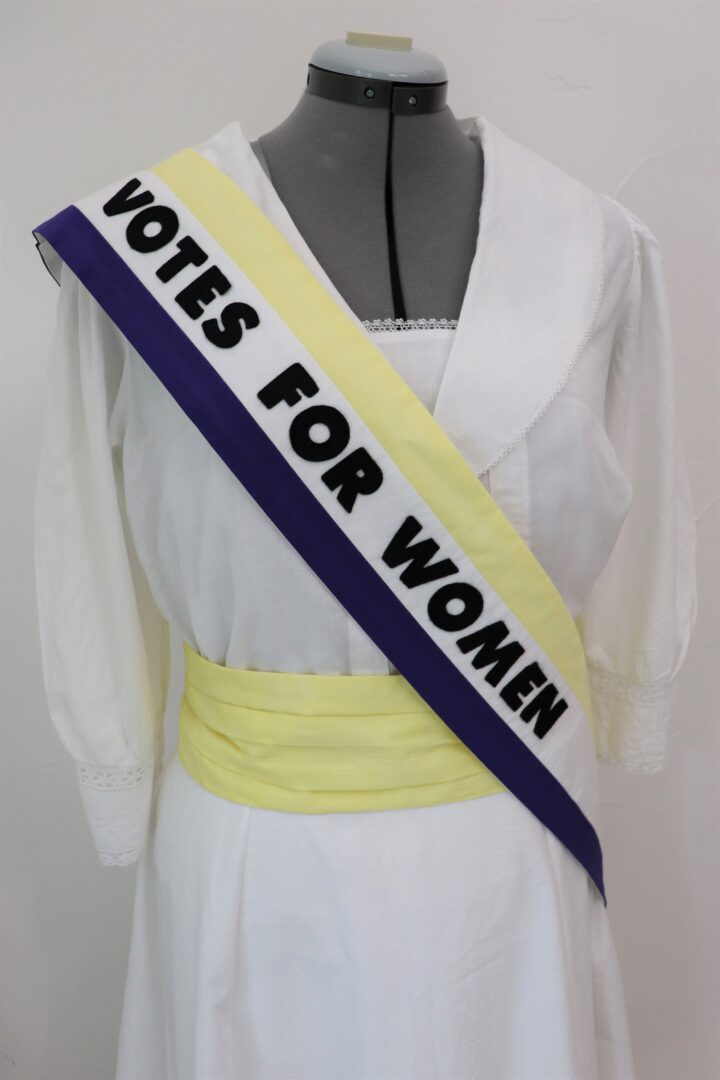
Some of the fabric length was removed prior to sewing the angles together so it would sit perfectly at the hip.
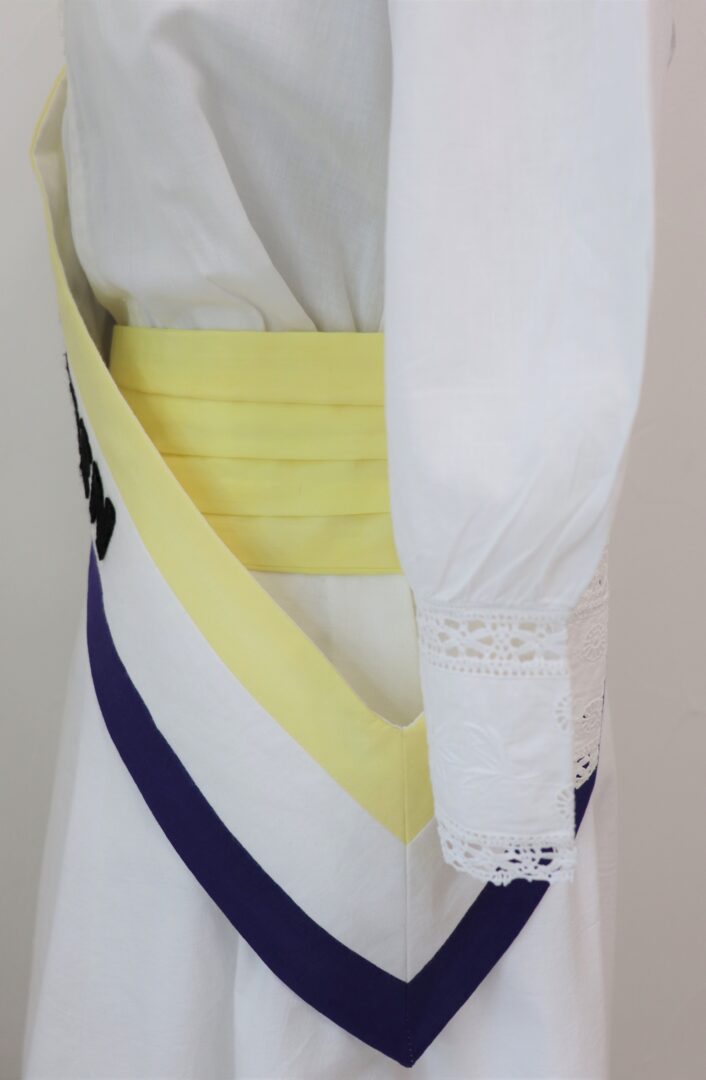
Left or Right
Most Suffragettes wore their sashes on the right shoulder. But there was always one or two rabble-rousers that bucked tradition and sported a left-sided sash.

Just One Vote
I hope you have enjoyed this historic tutorial!
For those of you who think your vote doesn’t matter:
On August 18, 1920, Tennesse was the last essential state to ratify the Nineteenth Amendment making it the law throughout the United States. This was achieved by just ONE VOTE. Young representative Harry T. Burn broke the tie by voting in favor of the Amendment. The presidential election of 1920 was the first in which women were permitted to vote in every state.

For more inspiration please visit my Edwardian Suffragette Pinterest Page.
Laura


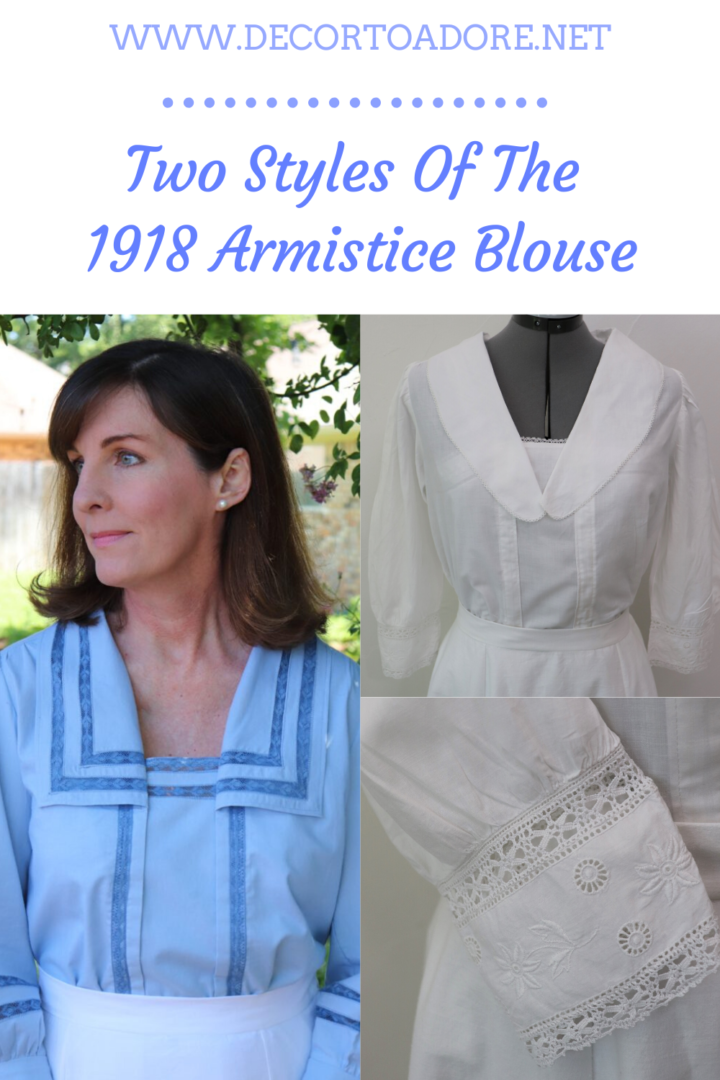
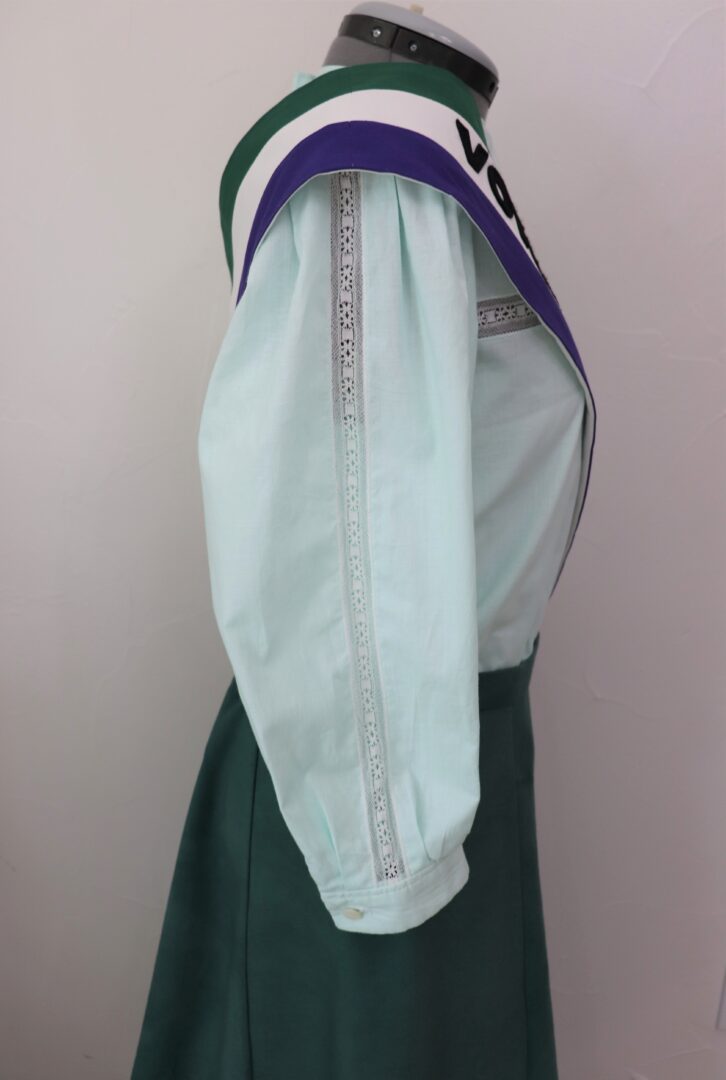
Thank you for the tutorial. A suffragette sash is in my sewing list. This is just the push I need.
I love how you have portrayed the sufferage sash. This should be more meaningful to our youth of today. My grandchildren probably get tired of hearing things like this from me but I truly think it’s very important for them to know about things like this in life.
I always love your posts like this, Laura. I learn so much, both with the history and then seeing your terrific sewing. This was especially interesting. I love the colors you chose!
How fun to read the history of the Suffragettes and see your sash! Aren’t you participating in some kind of event at the park later this summer? And I loved Mrs. Banks and her Suffragette participation in Mary Poppins. By the way, I’ve finally started on my Burda 1888 bustle dress. So far, so good and I’m making notes as I go..